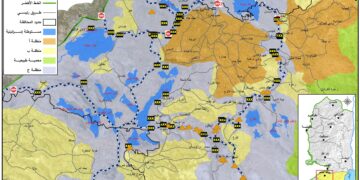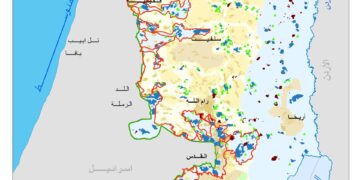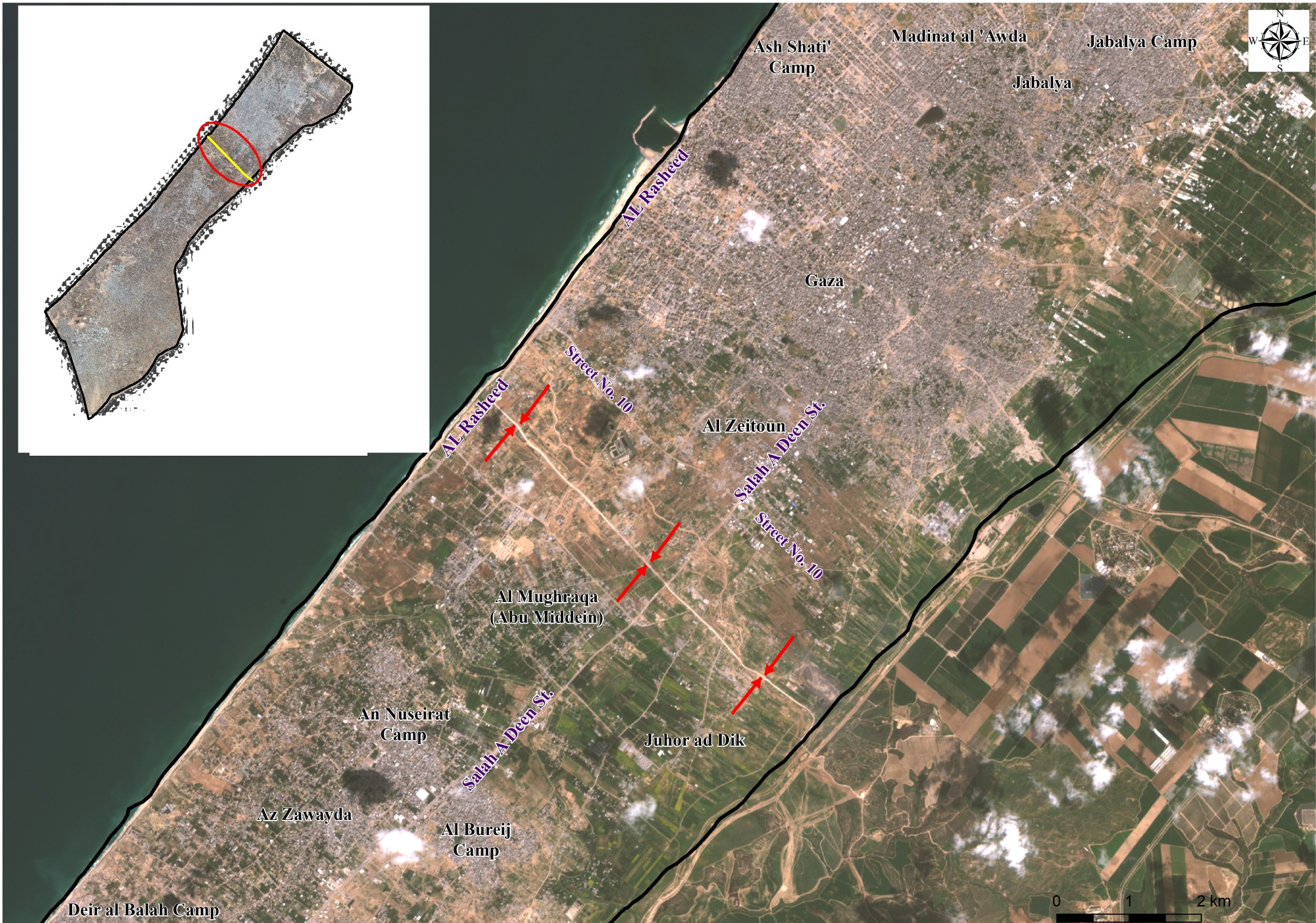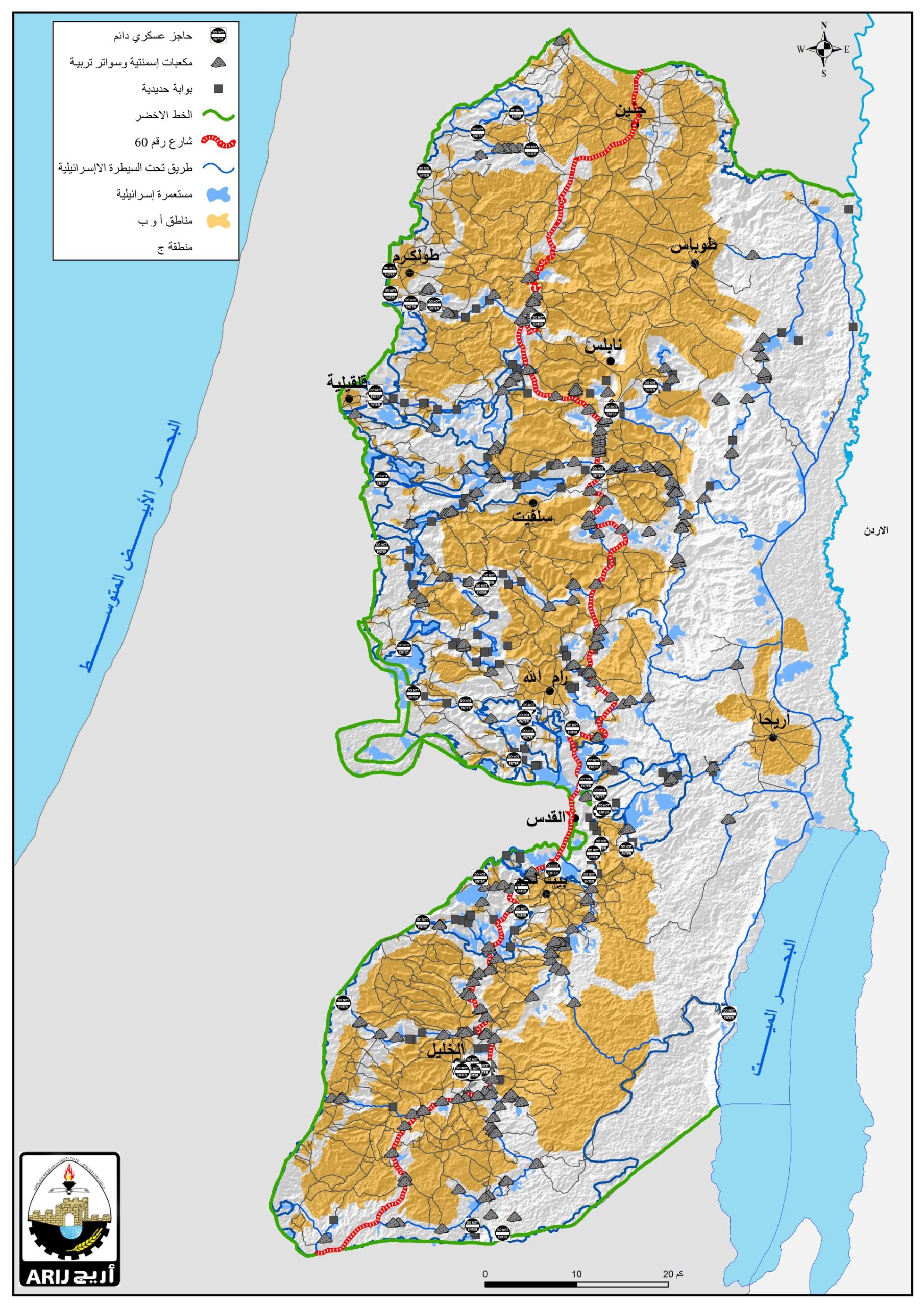Heavy rains that have fallen in Qalqiliya district during the past few days caused floods and marshes, destroyed almost 500 dunums of agricultural lands and dozens of Palestinian houses located along the eastern bank of the Israeli built Segregation Wall were drowned.
The floods were caused by the blockage of water drainage systems built under the ill-fated Wall. All emergency calls and contacts made with the Israeli side by the Qalqiliya municipality and Civil Liaison Office to re-open the drainage pipes have been in vain. The western part of Qalqiliya city looked as if it was part of a lake after it had been totally covered with water.
Mayor of Qalqiliya, Mr. Ma'ruf Zahran, held the Israeli side responsible for this disaster after refusing to open the drainage systems under the pretext that they were unreachable. However, Mr. Zaharnan added, these drainage systems are designed to work by remote control.
People of Qalqiliya have continuously warned from disastrous consequences of establishing the Wall in Qalqiliya district, in general, and in this part of the city, in particular, but to no avail.

Photo 1- Palestinian houses and agriculture are covered with floods
'Photo courtesy of Al -Quds newspaper''
The drowned area contains plastic houses, fruitful trees of different types, seasonal cultivation and horticulture, as well as residencies.
Head of Qalqiliya Agricultural Department warned from a larger catastrophe against environment and agriculture if the drainage systems are not immediately opened in the light of the likelihood for more rain fall in the coming days.
Dozens of Palestinian farmers were shocked at the size of damage inflicted on them. In an interview by LRC field worker with one the Palestinian farmers, Mr. Adel Horani, who lost some of his sheep, described what happened as a disaster that hit Qalqiliya.
Another farmer, Mr. Mohammed Abdul Rahman Abu Khader, whose 8 dunums of lands were covered with floods, said the following: 'This damning Wall has confiscated most of our lands and, now, it is destroying what has remained of livelihoods for our families. First and foremost, the Wall must be dismantled and, secondly, Palestinian farmers should be compensated for all the damage done to them.'
Livestock was no better lucky as the floods have destroyed dozens of barracks of poultry and sheep farms claiming the lives of thousands of them. Mr. farmer Sadeq Salim is a typical example as he lost 6000 chickens.
On the other hand, the floods hit agricultural lands in other villages and communities located in various parts of Qalqiliya district. Among these villages were Azzun Atma, Beit Amin, Salman, Sanniriya (basin No. 4, the areas of Al Ghota and Al Wad Al Gharbi) and Kufr Thuluth ( basin No. 2). All the aforementioned areas are located in a valley where water gather and goes down towards the coastal plain. Fertile agricultural lands are located on both sides of the valley.
It is worth mentioning that the Israeli occupation forces, as part of constructing the Wall, built a metal bridge over the valley provided with huge drainage systems whose inlets are covered with layers of barbed wires to stop, according to Israeli claims, the infiltration of Palestinians into Israel. Once the current was formulated in the valley, it carried with it piles of dirt, rocks and rubbish blocking all the water inlets under the bridge and created floods in the valley at height of 8 meters in deepest point. All the adjacent agricultural lands ( estimated at 11 dunums) sank in water and their cultivation were destroyed. Among the farmers affected are Mr. Amin Hussein Taha, Fa'iq Taha Ommer, and Azmi Nimer Dhiab.
Moreover the floods hit another 28 dunums of citrus trees in the same valley in West Bank proper owned by Mr. Ali Salman, Mr. Majid Salman and Mr. Amin Hussein. Another 55 dunums of citrus trees, owned by Mr. Rushdi Abu Haniya and Mr. Yusif Quzmar were, also, covered with water.

Photo 2: The metal bridge and the water inlets underneath
Photo courtesy of LRC
In this particular area, the Israeli occupation authorities took action only three days after the beginning of the flood and after the damage had already taken place.


Photo 3 & 4– Destroyed green houses and horticulture
Photo courtesy of LRC & – Destroyed green houses and horticulture Photo courtesy of LRC
Mr. Fa'iq Taha Ommer is a striking example of the victims who have lost all what they invested: 'I own two dunums of green houses which serve as the only source of living for me and my family under these difficult conditions. I borrowed an amount of money from a friend on the arrangement that I repay him at the end of the plantation season. After three months of plantation and as the harvest season was approaching, the flood came and destroyed every thing. Now, I am reduced to nothing.'
photo 5- A Palestinian family picking what has been left. A Palestinian family picking what has been left.
photo 6- a general view of the area after the disaster general view of the area after the disaster
Photo courtesy of LRC
Prepared by
The Land Research Center
LRC















